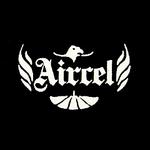For those those of you who are already familiar with Canadian comics, you’ll know all about Aircel. For those of you who don’t, it was one of the most successful and well known publishers of the Canada’s eighties alternative comics inside Canada. Hopefully this post will be informative either way.
Officially founded in September of 1985 by Barry Blair and Ken Campbell, the roots of Aircel had long since been established. Campbell, the owner of an insulation installation company (Aircel Insulation) had lost his contract with the government at which his enthused employee wasted no time in trying to persuade him to move in the direction of comics. It worked, and Aircel Insulation then became Aircel comics.
Samurai, officially their first title, had been in print long before Aircel was producing comics, as was Elflord and Dragonring. These were the house titles Blair published under Nightwynd productions which had been publishing since the beginning of the eighties. Interestingly, many of these featured the work of a very young artist by the name of Dave Cooper. Some of the other artists featured in Nightwynd at this time were Mike Burchill, Donald Lanouette, Ron Fortier, Tim McEown, and Guang Yap, the latter two which continued to work with Aircel for a very long time. The majority of these comics were black and white, oversized and were somewhere between a small press comic and a fanzine. The quality improved greatly when they were moved over to Aircel which made the comic in the traditional size with colour covers and newsprint interior.
The comics did very well. After a short first volume of black and white interiors they introduced the second volume in full colour. Blair, having grown up all over Asia, was very familiar with manga and applied this to his own style despite its absence in a predominantly North American style industry. He later became known for popularizing the manga style despite its weak North American market.
Aircel successfully produced comics until late 1988 when the company merged with Malibu comics in exchange for support through their financial difficulties. Because of this and other changes including staff, shortly after the merger Aircel ceased publishing its house titles. It was around this time that it began to publish erotic or sex themed comics, most notably Blair’s Leather and Lace, and change the Aircel logo. In 1990, Men in Black, which later became the hugely successful movie. Finally, in 1991 Aircel broke even, and Blair formally handed the company over to Malibu before moving on to other projects. Aircel continued under Malibu until 1994 when Marvel bought it, after which it ceased publishing.

